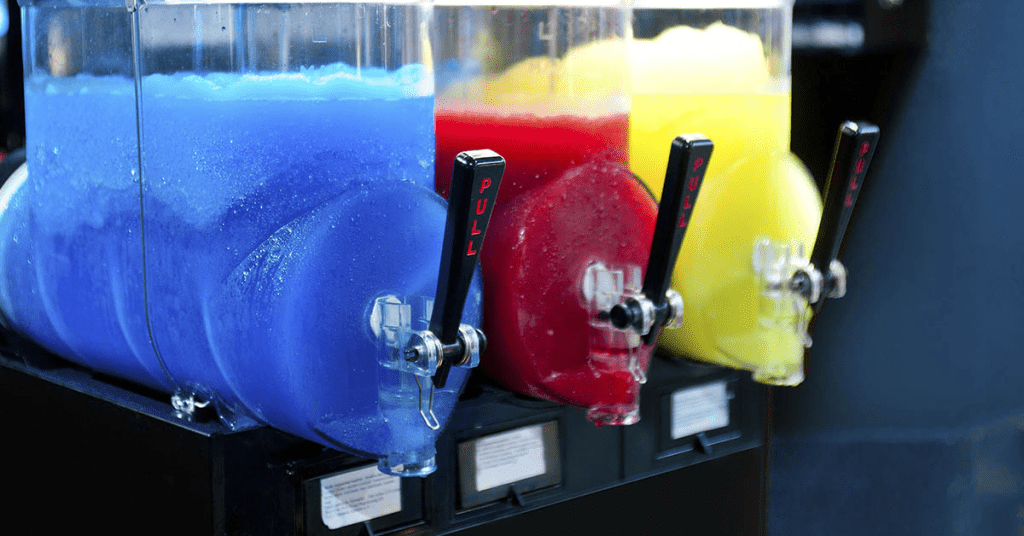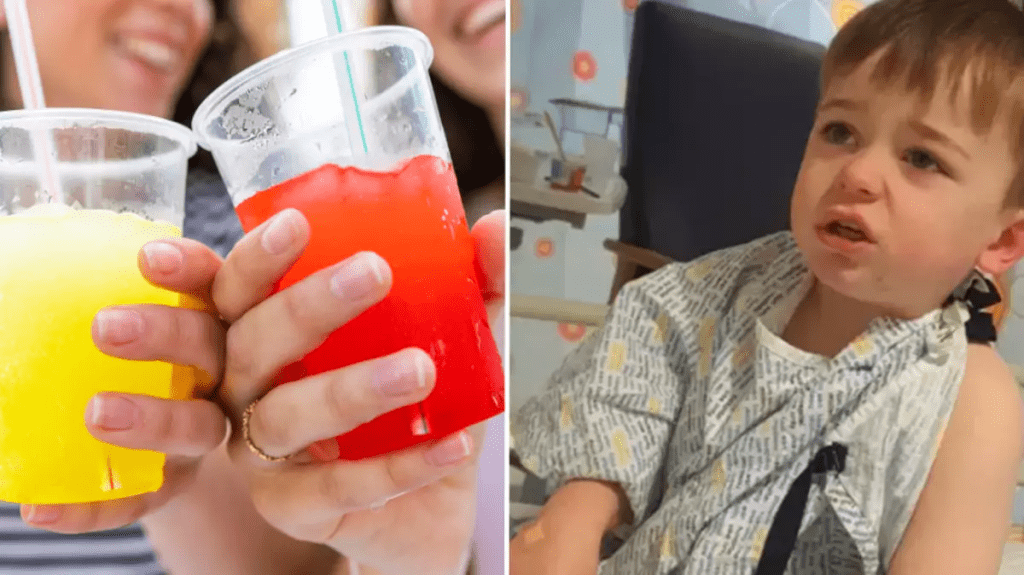What started as a fun family outing quickly turned into a life-threatening situation for four-year-old Albie from Warwickshire, UK. After enjoying a strawberry-flavored slushy during a visit to a local bowling alley, Albie’s health took a sharp turn for the worse, leaving his parents, Beth Green and Fred Pegg, terrified as they rushed their unconscious son to the hospital. What they later discovered was that this seemingly harmless treat contained an ingredient that triggered a near-fatal reaction.

A Day That Turned Into a Nightmare
Albie had been excited for a fun day out with his friend at the bowling alley. Like many kids, he loved slushy drinks—cold, sweet, and colorful. It seemed like the perfect refreshment for a day of fun. However, within an hour of finishing the slushy, Albie’s behavior changed dramatically. According to his mother, Beth, her son went from “cheerful to agitated and fatigued in the blink of an eye.” Concerned, they quickly realized something was seriously wrong.
As Albie’s condition deteriorated, Beth and Fred rushed him to the hospital. During the frantic journey, Albie lost consciousness, leaving his parents fearing the worst. At the hospital, doctors worked tirelessly to stabilize the young boy, whose heart rate continued to drop. Beth described these moments as “agonizing,” helplessly watching as medical professionals tried to save her son.
Albie’s Road to Recovery
After three long days in the hospital, Albie finally began to recover. Doctors diagnosed him with a rare intolerance to glycerol, a common ingredient in slushy drinks, which had caused a severe reaction. While the relief of seeing Albie pull through was overwhelming, the trauma of the experience lingered for his parents. The slushy drink, which seemed like an innocent treat, had nearly cost their son his life.
The Hidden Dangers of Slushy Drinks
Slushy drinks are popular, particularly among young children, but they may harbor hidden dangers. One such ingredient is glycerol, a sweetener and preservative commonly found in these beverages. In Albie’s case, glycerol intolerance was responsible for his near-fatal reaction. While glycerol is generally considered safe, excessive consumption—especially in young children—can lead to serious health issues. These include hypoglycemia (low blood sugar), shock, and in severe cases, unconsciousness.
For children under four years old, whose bodies may not yet be able to metabolize certain ingredients like glycerol effectively, even a single serving of a slushy drink can pose significant risks. The cold nature of the drink may also exacerbate its effects, further complicating the body’s response.
The Response From Health Authorities
Following Albie’s incident and other similar cases, the UK’s Food Standards Agency (FSA) has issued new guidelines regarding the sale and consumption of slushy drinks. One of the key recommendations is to avoid selling slushy drinks to children under four years old due to their increased vulnerability to glycerol intoxication. Additionally, the FSA has advised against free refill promotions for children under the age of 10, a common practice in many entertainment venues. These measures aim to reduce the risks associated with high glycerol intake.

Health officials are now working to raise awareness among parents and retailers alike, emphasizing the importance of understanding the potential dangers of certain ingredients in products marketed to children.
A Call for Greater Awareness and Stricter Regulations
Albie’s parents, Beth and Fred, have become vocal advocates for greater awareness about the potential risks of slushy drinks. Their firsthand experience with the devastating effects of glycerol intolerance has driven them to call for stricter regulations on the sale of such beverages to young children. They believe that clearer labeling, warning signs, and even age restrictions should be implemented to prevent future tragedies.
“We never imagined that something as simple as a slushy could bring us to the brink of losing our son,” Beth said in a recent interview. “Parents need to know what’s in these drinks, and businesses need to take responsibility for what they’re serving to our kids.”
Beth and Fred’s advocacy is resonating with other parents who have faced similar scares, as well as health professionals who are pushing for more stringent oversight on products aimed at children.

The Role of Parents and Retailers
While regulatory bodies like the FSA are taking steps to mitigate risks, the role of parents and retailers in protecting children cannot be understated. Parents must stay informed about the ingredients in the treats they allow their children to consume, especially those sold at popular family venues like bowling alleys, cinemas, and theme parks. Checking labels, asking about ingredients, and limiting portions can go a long way in preventing unnecessary health risks.
Retailers also bear a significant responsibility in ensuring that their products are safe for all customers. By adhering to guidelines, providing clear information, and training staff to be aware of potential health concerns, they can help prevent tragic incidents like Albie’s. Offering alternative beverages for younger children and displaying warnings about potential risks can help create a safer environment for everyone.
Albie’s Story: A Wake-Up Call for All
Albie’s ordeal is a stark reminder of how even the most harmless-seeming treats can harbor hidden dangers. While glycerol intolerance is rare, the consequences of such reactions are severe, and parents and caregivers must remain vigilant. The incident has ignited a national conversation in the UK about child safety, food labeling, and the responsibilities of both parents and businesses when it comes to what children consume.

Thankfully, Albie’s story had a positive outcome, and after several days in the hospital, he made a full recovery. However, for Beth, Fred, and many other parents, the scare has left an indelible mark. Albie’s story highlights the importance of increased awareness, not just about glycerol, but about the potential risks in everyday foods and drinks that we often take for granted.
Conclusion
What happened to Albie could happen to any child, and his story should serve as a reminder to all parents and retailers about the importance of vigilance when it comes to food and drink safety. Slushy drinks, while popular and seemingly harmless, can contain ingredients like glycerol that pose real risks for young children. Thanks to the advocacy of Albie’s parents and new guidelines from the FSA, more attention is being placed on the dangers of these beverages.
As consumers, parents, and businesses, we must come together to ensure that our children are safe. Whether through stricter regulations, clearer labeling, or simple caution, we can prevent future incidents and ensure that every child can enjoy their treats without the fear of hidden dangers lurking beneath the surface.


